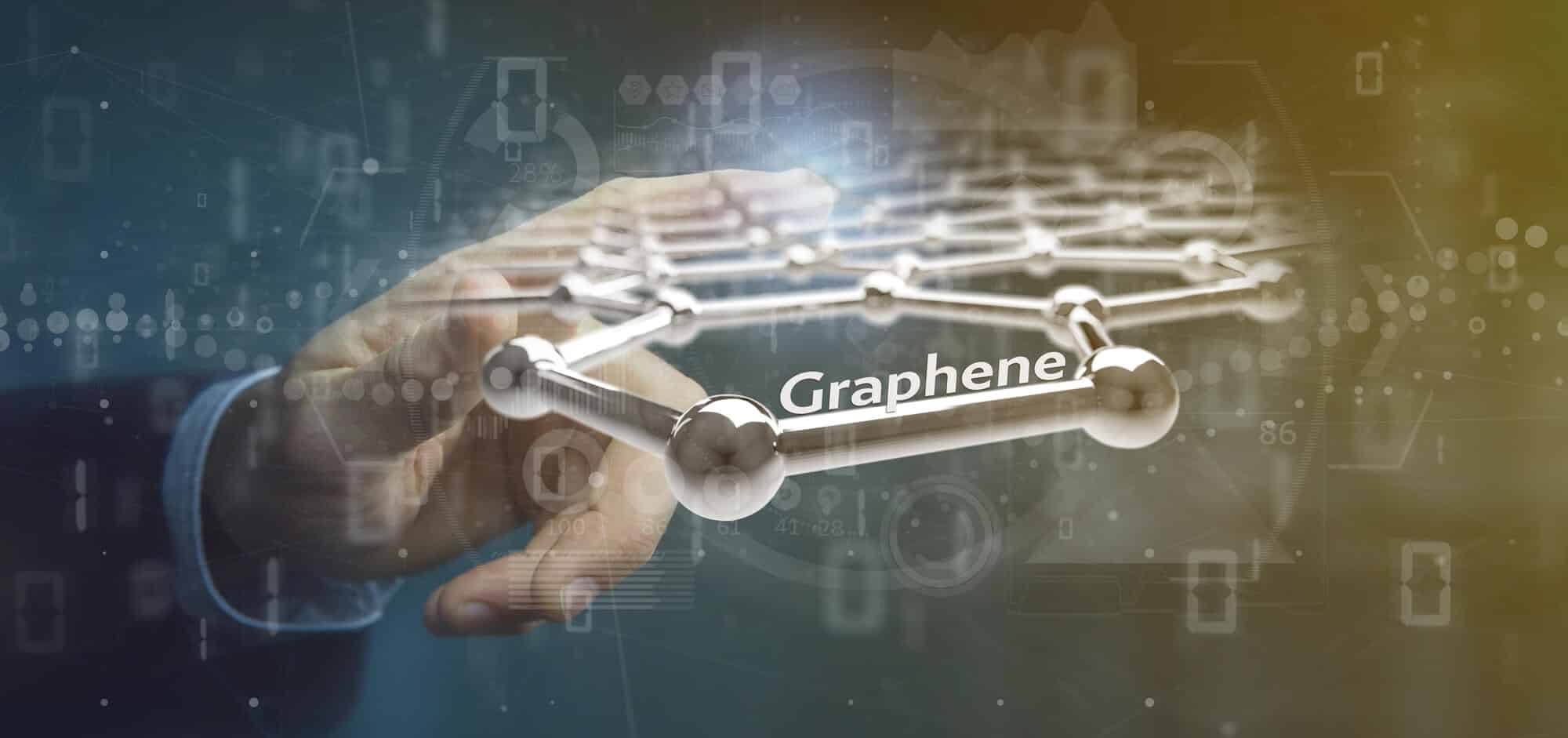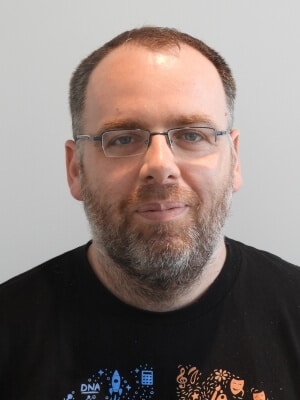An online international conference with the participation of industry and academic leaders was concerned with the promotion of breakthrough technologies that incorporate the material Graphene, which is the basis of one of the most significant discoveries so far in the 21st century

The international conference led by the Israel Graphene Association of the Innovation Authority (The Israeli Graphene Consortium) was held online and dealt with the material that is the basis of one of the most significant discoveries so far in the 21st century and has a great impact in dissipating heat in electrical circuits and achieving high performance even in the high frequency field.
The Israeli Graphene Association promotes the use of graphene as a unique and innovative material in the electronics industry, emphasizing the application of graphene in products and production processes in the Israeli industry. In the last decade, graphene stands out as one of the materials that is expected to influence global technological development. Graphene has significant technological potential thanks to its unique properties - the ability to conduct heat and transfer information at a high rate. These capabilities are suitable for applications in the field of electronics.
The unique knowledge developed in the Israeli academy in the field, makes it possible to realize the potential of graphene for the benefit of developing future technologies and products - when the application of graphene will make it possible to overcome the existing barriers in the industry, placing Israel at the forefront of technology and representing a global breakthrough in the ability to utilize the unique properties of graphene in the electronics industry.
Prevention of heating of electronic components
The association's activity is focused on two main areas: the first area is heat dissipation in electrical circuits - this element prevents overheating and makes it possible to reduce the degree of heating of critical points, such as energy-intensive processors and chips. The second area is the transfer of information at high rates - this area is expected to allow the transfer of information at a rate much faster than usual, thus significantly speeding up the communication capabilities of computers and server farms. The development activity is expected to contribute to a wide range of technological uses based on printed circuits, such as: use of virtual and augmented reality at home, providing the ability to play computer games at a fast pace and high resolution, robotics uses and network-based artificial intelligence uses.
The Chief Scientist on behalf of the Ministry of Economy and Chairman of the Innovation Authority's Board of Directors, Dr. Ami Applebaum, said: "The Graphene Group is one of the Authority's ways of promoting generic technology. We combine industry, academia and various research institutions, and in many cases we connect competing companies that would not otherwise cooperate. What we are trying to do is promote greater and more meaningful research for everyone, and to be more successful than any company would do individually. This collaboration is not self-evident. Graphene is one of the most promising materials and once we take it from the laboratory to industry, it will have a significant impact on the electronic industries. I am happy that against the background of the difficult times in the world and in Israel with the corona virus, the association is showing progress and holding this important event."
The association's activities began in January 2020
The activity coordinator of the Israeli Graphene Association, Anar Shoham, said: "The association started after POC in 2019 and we started the activity of the association in January 2020. Its main goal is the introduction of graphene to improve printed electronic circuits. There are many studies in the world in the field of graphene and it is a hot topic, there are many areas of research in the field and high potential in many areas of engineering and research and development. We believe that graphene in PCB will have a wide impact in the industry, and since Israel has a lot of research knowledge on the subject, we thought it would be right to apply this knowledge in the Israeli electronics industry. We focus on 3 areas of activity: heat management through the combination of thin and thick graphene layers in the PCB and the use of graphene for coating printed circuits, high speed support and industrial process".
Single-layer graphene at a high growth rate
Prof. Rodney Ruoff from the National Institute of Science and Technology in Ulsan, South Korea (UNIST), and a world-renowned researcher in the field of graphene who was the first to grow the material using the CVD method, detailed the research he leads in graphene production and the production of copper and nickel alloys for graphene growth. He pointed out that in a wide range of conditions, single-layer graphene can be obtained without adding layers and that the growth rate can be very fast. He refined the connection between the surface properties and graphene growth. He described how bilayer graphene grown by CVD was transformed into monolayer diamond material.

Chairman of the Israeli Graphene Association and head of the Advanced Development Group at NVIDIA, Dr. Elad Mantovitch: "We are currently living in an era where the consumption of information is growing at an exponential rate everywhere. As we analyze more data, more insights can be extracted from it that can be used for a wide variety of uses and products. When we examine the existing technological challenges in information transfer technologies, it is possible to identify that one of the significant challenges is losses in high frequency printed circuits. One of the leading solutions for answering this challenge is the use of graphene. Graphene is a kind of 'holy grail' that creates a new space of solutions that allow to maintain a high level of performance while increasing the bandwidth of the electronic cards - accordingly, one of the main axes in Magad focuses on transferring information at a high rate. As part of the association's activity, we aim to provide a comprehensive solution that allows reference to all the necessary supply chain rules. From planning, to manufacturing and checking the quality of the finished product. Providing reference to the entire production chain, from end to end, will allow simple integration of the subject in the future into the business-technological environment and a quick arrival at full integration of this advanced material in the industry. We are happy about the continuous support of the Innovation Authority in the Graphene Association, which enables the innovative technologies developed within the Association to be promoted in a high-quality and fast manner."
Heat conduction solutions
The CTO of the company PCB Technologies, Yad Elia, spoke about heat conduction solutions with graphene and its integration in printed circuits: "Two significant advantages can be achieved by using graphene in the design of printed circuits. Multi-layer graphene has a heat dissipation mechanism that can lower component temperature that reaches a critical level, and graphene used quickly in digital applications can reduce loss." Elia also said: "The company PCB Technologies, which specializes in the design and manufacture of sophisticated, multi-technology printed circuits and their components, takes an active part in the Graphene Association of the Innovation Authority. The implementation of graphene in printed circuits will provide a unique solution for high-speed circuits, HSD, and power circuits for heat removal and dissipation, due to its unique properties." Alia presented a broad overview for the purpose of understanding the applications, the processes and the special raw materials, in order to respond to the same limitations: heat removal and high frequency. The review included unique solutions for the aviation and radar industry "PCB Technologies considers it important to incorporate graphene into HSD circuits, in order to improve performance, and reduce amplifiers in complex circuits and systems," Elia said.
Back in the first session of the conference, Prof. Ariel Yashma from the Faculty of Engineering at Tel Aviv University spoke about the transition of working with graphene from the laboratory to industry.
In the second session held, Prof. Andrea Ferrari, a world expert from the Graphene Center of the University of Cambridge, spoke about graphene and layered materials in the fields of photonics and optoelectronics. He talked about future communication needs, optical options, modulators, sensors and more. Prof. Ferrari noted that by 2025 technology 5G will account for 45% of all mobile data and 74% of cellular subscribers in North America. Traffic is expected to grow by 31% each year between 2019 and 2025. He noted that after 5G, 6G will combine 5G, artificial intelligence, data analysis and IOT. He talked about overcoming data centers and bottlenecks of 5G antennas, the challenges and the role of graphene that can introduce a variety of performance improvements.
Dr. Moshe Ben-Shalom from the School of Physics at Tel Aviv University spoke at the session about a pro-electric system based on the boron-nitride layered material; The head of the PCB division at NVIDIA, Boaz Attias, spoke about the challenges of designing boards with graphene in printed circuits and Prof. Ernesto Juslevitch from the Weizmann Institute of Science spoke about the electromechanics of carbon nanotubes.
Mass production of graphene for printed circuits

Prof. Doron Neve from the Faculty of Engineering at Bar-Ilan University locked the seat and spoke about the mass production of graphene for printed circuit applications: "The Israeli Graphene Association presented the entrance of the Israeli industry to the advanced technology based on graphene, in the field of high frequency printed circuits." Prof. Neve's lecture reviewed the association's progress in the areas of developing local industrial production capacity of high-quality graphene and the integration of graphene in printed circuits: "Graphene is designed to increase the high-frequency electrical conductivity of circuits as well as the thermal conductivity - to optimize heat removal and The operation of printed circuits. To this end, the association develops technologies based on monoatomic graphene-thick coating on copper and also thick layers of graphene."
In the third session, the scientific director of Graphenea - one of the leading companies in the field of graphene in the world and operating from Spain and Boston, Dr. Amaya Zorotoza, who spoke about the production of graphene and its use in detectors. Regarding the transition of graphene production from the laboratory to industry, she said: "A scalable production process is critical to the commercial integration of graphene. The catalyst that accelerates its production must have properties of solubility in carbon, pure, flat, monocrystalline, and have a preferred orientation." She reviewed the graphene production methods used by the company, the cleaning methods used and more. In addition, she reviewed the use of graphene in sensor technology and the way it is implemented in the company, among other things, in MEMS, photo-sensors, bio-sensors and more. She pointed out that graphene has tremendous potential in the fields of telecommunications, health, night cameras and more.
Prof. Kostav Banerjee from the Department of Electrical Engineering at the University of California, a world expert in nanoelectronic devices, spoke about the next generation of layered materials integration in electronics: "It is very important, in every new family of materials, to find uses. This is also true for two-dimensional materials." Prof. Banerjee spoke about the development of the fourth industrial revolution focused on IOT, and noted that efficient energy generation in the future will be based on two-dimensional materials. He reviewed the place of graphene in this family of materials as he did in his 2016 study and noted that it is a material that arouses great excitement. He noted that two-dimensional semiconductor materials offer thin channels in advance, with an effective mass, a relatively large forbidden energy gap, and more. He simulated three-dimensional materials for potatoes and two-dimensional materials for onions, which in terms of structure are more layered, and described their advantages in terms of structure, electrostatics and variations.
Prof. Aran Regev from the Department of Chemical Engineering at Ben-Gurion University of the Negev spoke about solving problems of hot spots in circuits by combining graphene-based coatings; Prof. Elad Koren from the Faculty of Materials Engineering at the Technion spoke about nano-manipulation of two-layer graphene contacts; Prof. Elam Yalon from the Faculty of Electrical Engineering at the Technion spoke about thermal aspects of layered nanomaterials and Prof. Alexander Balandin from the Faculty of Electrical and Materials Engineering at the University of California and a world expert in heat conduction in nanomaterials spoke about the unique heat conduction properties of graphene for thermals.
VP of Technological Infrastructure at the Innovation Authority, Aviv Zaevi: "The Graphene Group is supported by the Innovation Authority as part of the Authority's strategy to support high-risk R&D of future breakthrough technologies. The joint development of the Israeli academy and the industry will advance the Israeli chip, printed circuit and smart components industry, towards the next decade, with advanced technological products that will be able to compete with their quality in the world market."
The conference led by the Israel Graphene Association of the Innovation Authority was held in collaboration with PCB Technologies, NVIDIA, Elbit Systems, Elisra, Simtel, Bar-Ilan University, the Technion, Ben-Gurion University of the Negev and Tel Aviv University. The association was established in 2019 with the support of the Innovation Authority and as part of the "Magnet" program led by it. The association works to promote innovative and ground-breaking technologies that incorporate the material graphene, for the discovery of which and the properties associated with it, the researchers Andrei Geim and Konstantin Novoslov were awarded the Nobel Prize in Physics in 2010. The association conducts research in materials and innovative industrial processes for the benefit of the production, transfer and use of graphene, in sustainable industrial production. The Israeli Graphene Association has leading partners from industry and academia in Israel, working together to develop and test graphene-based technologies.
More of the topic in Hayadan:
- An innovative method for wiring electronic components
- Development of an integrated circuit from bacteria
- Even when damaged - graphene is still the strongest material
- The chief scientist at TMT will support research in the fields of water purification in nanotechnology and satellite communication
- A new method of using graphene material

3 תגובות
Not an advertisement (I wish). This is a conference summary.
Does anyone know if there are any graphene-based products today?
Thanks
Why didn't you write in the first line:
"This is an advertisement page, it does not contain any information worth reading"?